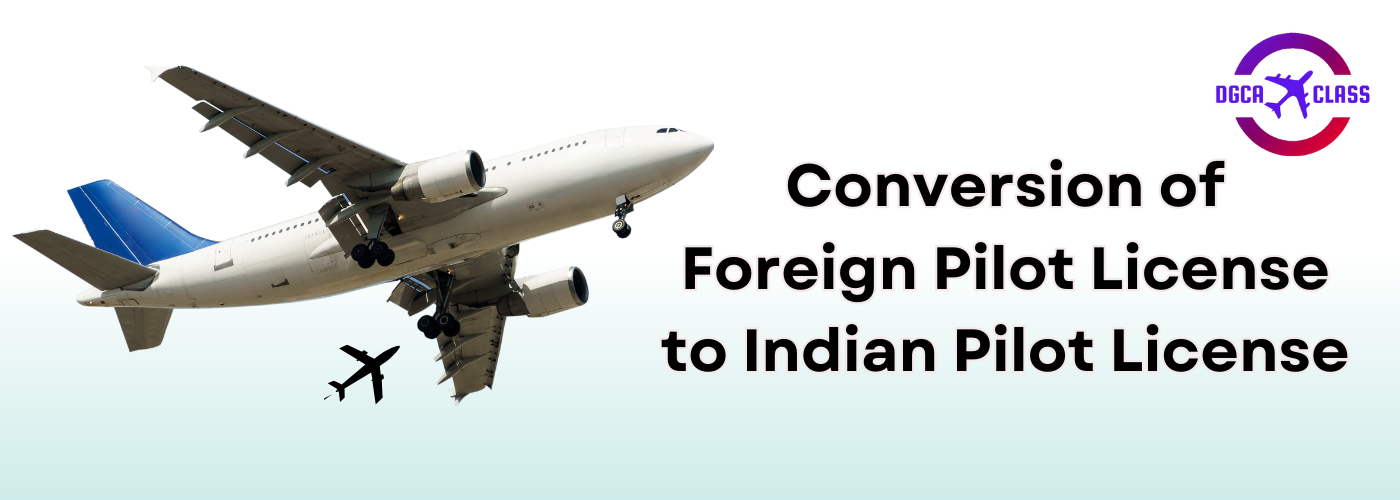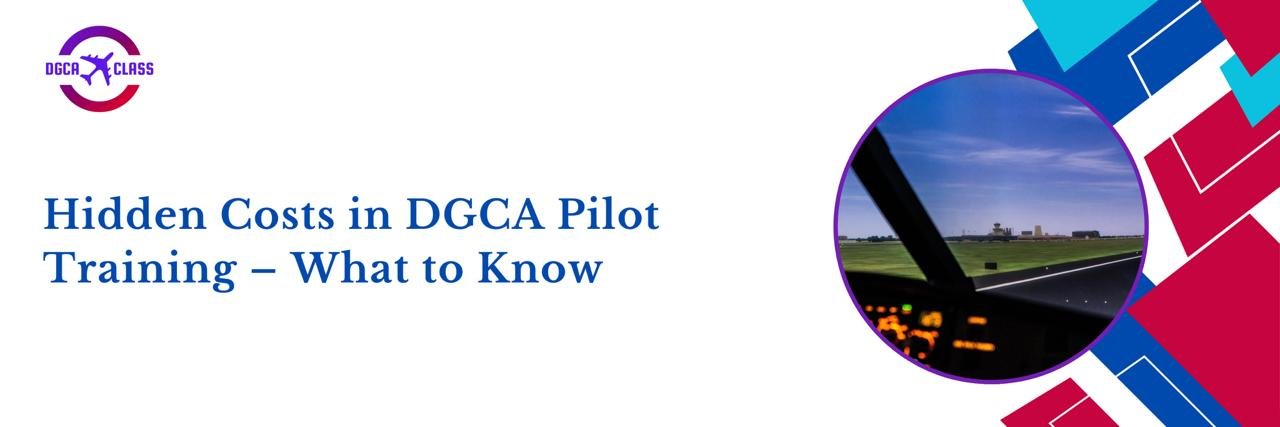Obtaining a pilot license is a significant achievement, but what if you wish to fly in a different country, such as India, with your existing foreign license? The good news is that the process of converting a foreign pilot license to an Indian pilot license is possible, though it requires adherence to specific procedures and regulations. In this guide, we'll walk you through the steps involved in this conversion process.
-
Holding a valid foreign pilot license issued by a country recognized by the DGCA.
-
Meeting the medical fitness standards prescribed by the DGCA.
-
Completing the necessary flying hours and training requirements as per Indian regulations.
-
Valid foreign pilot license.
-
Passport and visa documents.
-
Proof of English language proficiency.
-
Medical fitness certificate issued by a DGCA-approved medical examiner.
-
Logbook detailing your flying experience.
-
Any additional documents as specified by the DGCA.
With your documents in order, you can proceed to submit your application for conversion to the DGCA. The application process usually involves completing the requisite forms, paying the necessary fees, and submitting all supporting documents either online or at the designated DGCA office.
Upon receiving your application, the DGCA will conduct a thorough screening and evaluation process to assess your qualifications and flying experience. This may include verification of your foreign license, review of your logbook, and assessment of your medical fitness.
In some cases, the DGCA may require you to fulfill additional requirements to ensure compliance with Indian aviation regulations. These requirements could include undergoing additional training or examinations to familiarize yourself with Indian airspace, procedures, and regulations.
As part of the conversion process, you may be required to pass written and practical examinations conducted by the DGCA. These examinations are designed to assess your knowledge of Indian aviation laws, procedures, and safety protocols.
Once you successfully complete all the necessary steps and meet the DGCA's requirements, you will be issued an Indian pilot license. This license will authorize you to fly aircraft within Indian airspace in accordance with the privileges and restrictions specified by the DGCA.
After obtaining your Indian pilot license, it's crucial to maintain currency and compliance with DGCA regulations to ensure the validity of your license. This includes staying up-to-date with recurrent training, medical examinations, and any regulatory changes introduced by the DGCA.
Guidelines for Conversion of Professional Pilot’s Licenses
```html
| Requirement |
Description |
| Age |
Must meet the minimum age requirement as specified by the DGCA. |
| Educational Qualifications |
Must possess the necessary educational qualifications as per DGCA regulations. |
| Medical Fitness |
Must meet the medical fitness standards as prescribed by the DGCA. |
| Flying Experience and Competency |
As laid down in respective sections of Schedule II of the Aircraft Rules, 1937. |
All applicants for conversion of a foreign CPL to an Indian CPL are required to undergo skill tests in India on at least one aircraft type required to be endorsed on the Indian license.
If an Instrument Rating (IR) is not issued by the contracting state, the skill test carried out in that state shall not be recognized. Applicants must undergo an IR skill test in India for the issuance of IR.
Only authenticated original log books utilized and maintained for the issue of the contracting state license will be accepted. Log books must include essential information verified by the appropriate authority in the state of issue, including endorsements of respective stages of flying training.
An aircraft type included in the aircraft rating of a pilot’s license must be on the Indian register of civil aircraft and have a valid certificate of airworthiness.
Experience gained for obtaining a foreign license in a contracting state is considered towards the conversion of the license, provided the aircraft type falls within the definition of aeroplanes as laid down in Aircraft Rules 1937. In cases where the aircraft type is not registered or endorsed, applicants may need to pass DGCA examinations and undergo required training and skill tests.
The revised guidelines for conversion of professional pilot’s licenses issued in ICAO contracting states into Indian professional pilot’s license (Commercial Pilot’s License) are attached at Appendix I.
This structured presentation provides a clear overview of the guidelines for converting professional pilot's licenses, covering various aspects such as requirements, skill tests, log book authenticity, and the consideration of experience for conversion.
Conversion Requirements and Procedures:
| Requirement |
Description |
| Valid Foreign Professional Pilot’s License |
A license that is recognized and valid in the applicant's country of origin. |
| Valid Foreign Class I Medical Assessment |
A current medical certificate that meets the standards of Class I assessments. |
| Statement of PIC Cross Country Flights |
20 hours or 50 hours if IR is requested, including flights beyond a radius of 100 nautical miles from the departure aerodrome. |
| Certificate of PIC Cross Country Flight |
A flight of not less than 300 nautical miles with full-stop landings at two different aerodromes. |
| Statement of 5 hours of night flying as PIC |
Includes at least 10 takeoffs and 10 landings within six months preceding the application date. |
| For IR issue: Statement of instrument time totaling 40 hours |
At least 5 hours on actual/simulated aircraft in the preceding six months. |
| Skill test reports for endorsement of additional aircraft on CPL |
Includes multiengine type rating/class rating on foreign license. |
| Flying experience on single crew certified aircraft |
Considered as PIC only when the applicant is the sole manipulator of controls. |
| Completion of remaining flying hours |
As required by Schedule II of the Aircraft Rules 1937 in the contracting state or in India if regulations differ. |
| Language proficiency in aviation English |
Mandatory. Proficiency level indicated on foreign license will be endorsed on the Indian CPL. |
| Requirement |
Description |
| General flying tests (day and night) |
Cross country flight tests by day and night, meeting specified distances and landing requirements. |
| Instrument Rating test (if IR desired) |
From an approved flying training institute in India. |
| Signal reception tests report |
From an approved flying training institute in India if not carried out in an ICAO contracting state. |
| Pass results of air regulation and composite papers |
(Met + Navigation) in DGCA within the preceding 60 months. |
| Valid Indian Class I Medical Assessment |
Must have a current Class I medical certificate from DGCA. |
| Indian RTR(A) |
(If Flight Radio Telephony Operator’s License is not issued earlier). |
| Verification certificates from respective school boards |
For 10th and 12th standards, ensuring pass in Physics and Maths separately and recognition of qualification from AIU. |
| Payment of fees |
As prescribed in Rule 48 of Aircraft Rules, 1937, on Bharat Kosh website. |
Converting a foreign pilot license to an Indian pilot license is a detailed process that requires careful attention to eligibility criteria, documentation, and regulatory requirements. By following the steps outlined in this guide and working closely with the DGCA, you can successfully navigate the conversion process and pursue your passion for flying in the vibrant skies of India.
This guide provides a comprehensive overview of the conversion process, covering key steps and considerations for aspiring pilots looking to fly in India.
Yes, it is possible to convert a foreign pilot license to an Indian pilot license, subject to meeting certain eligibility criteria and fulfilling the requirements set by the Directorate General of Civil Aviation (DGCA) in India.
Eligibility criteria typically include holding a valid foreign pilot license from a country recognized by the DGCA, meeting medical fitness standards, and fulfilling flying hours and training requirements as per Indian regulations.
The DGCA recognizes pilot licenses issued by various countries. The specific list of recognized countries may be available on the DGCA website or obtained through direct inquiry.
Required documents usually include a valid foreign pilot license, passport and visa documents, proof of English language proficiency, medical fitness certificate, logbook detailing flying experience, and any additional documents specified by the DGCA.
The duration of the conversion process can vary depending on factors such as the completeness of documentation, scheduling of examinations, and processing times by the DGCA. It may take several weeks to several months to complete the process.
Yes, there is typically a fee associated with the conversion process. The exact fee amount can vary and should be confirmed with the DGCA or relevant authorities.
Yes, applicants are generally required to undergo medical examinations conducted by a DGCA approved medical examiner to ensure they meet the medical fitness standards prescribed by the DGCA.
Depending on the assessment by the DGCA, additional training may be required to familiarize yourself with Indian airspace, procedures, and regulations. This additional training ensures compliance with Indian aviation standards.
Applicants are typically required to demonstrate proficiency in the English language, as English is the standard language of aviation communication worldwide.
Yes, you can generally convert various types of foreign pilot licenses, including private and commercial licenses, provided they meet the DGCA's criteria for conversion.
There is no specific age limit mentioned for converting a foreign pilot license to an Indian pilot license. However, applicants must meet all other eligibility criteria set by the DGCA.
The validity period of the Indian pilot license obtained through conversion is typically subject to the same validity periods applicable to locally issued licenses. This can vary based on the type of license and regulations.
Yes, your flying experience documented in your logbook from your foreign license will be considered during the conversion process. However, it will be subject to verification and evaluation by the DGCA.
Yes, applicants are generally required to pass written and practical examinations conducted by the DGCA to demonstrate their knowledge and proficiency in Indian aviation laws, procedures, and safety protocols.
The type of aircraft you can fly in India will depend on the specific privileges and ratings granted on your Indian pilot license. Additional training and ratings may be required to fly certain types of aircraft.
Any restrictions on your Indian pilot license obtained through conversion will be based on the evaluation of your qualifications and flying experience by the DGCA. These restrictions, if any, will be communicated to you during the conversion process.
Residence in India is not typically a requirement for converting a foreign pilot license to an Indian pilot license. However, you must meet all other eligibility criteria set by the DGCA.
The conversion of an expired foreign pilot license may be possible in certain cases, but it is subject to approval by the DGCA and may require additional steps or documentation to demonstrate currency and proficiency.
Background checks may be conducted as part of the conversion process to ensure the applicant's suitability for holding an Indian pilot license. However, the extent of background checks may vary based on individual circumstances.
For more information or assistance with the conversion process, you can contact the Directorate General of Civil Aviation (DGCA) or seek guidance from authorized aviation training organizations or consultants specializing in pilot licensing procedures.


-1740215845.jpeg)


-1740494277.jpeg)


-1739892632.jpeg)